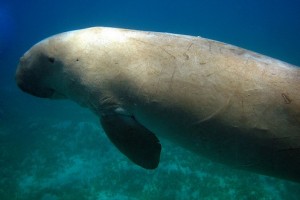 The name Dugong probably may not ring a bell to most. Otherwise known as Sea-cow, Dugongs are marine mammals akin to sharks, whales, seals and dolphins. These are harmless underwater animals, big in size and feed only on sea grass, coming on to the surface of water at regular intervals to breathe like whales and Gangetic Dolphins. They spend most of their time feeding on sea grass; because of this, their habitat is restricted to coastal waters of Indo-west –Pacific tropics and ranges across 37 nations. Once found in abundance, today their species are in extreme danger due to uncontrolled mechanized fishing, poaching and habitat loss. Dugongs are categorised as threatened species coming under the IUCN Red list. Quite a few important conservation measures are being undertaken by organisations including Government of India.
The name Dugong probably may not ring a bell to most. Otherwise known as Sea-cow, Dugongs are marine mammals akin to sharks, whales, seals and dolphins. These are harmless underwater animals, big in size and feed only on sea grass, coming on to the surface of water at regular intervals to breathe like whales and Gangetic Dolphins. They spend most of their time feeding on sea grass; because of this, their habitat is restricted to coastal waters of Indo-west –Pacific tropics and ranges across 37 nations. Once found in abundance, today their species are in extreme danger due to uncontrolled mechanized fishing, poaching and habitat loss. Dugongs are categorised as threatened species coming under the IUCN Red list. Quite a few important conservation measures are being undertaken by organisations including Government of India.
Unique Characteristics of Dugong
- Though they live in shallow waters and though marine mammals, being huge, their similarity is more towards terrestrial mammals like leopards, hares and elephants than to other marine mammals. They are herbivores.
- They feed only on sea-grass restricting their habitat to coastal areas; they come out of water frequently to breathe like whales and Gangetic Dolphins. The peculiar sound they make while breathing, like notes of music has also given them the name Sirenades.
- Dugongs though migratory are rather slow moving. They do move long distances, sometimes searching for food and mating. Recorded data shows some dugongs travelled up to a distance of 560 K.ms whereas many of them travelled less than 15 k.ms. They are not comfortable with too cold water say below 17 degrees centigrade and try to reach warmer locations.
- Dugongs take much longer to reach adulthood as compared to other mammals; it is between 9 – 18 years. In spite of 50-70 years of life span, females yield very few offspring during their life time. The gestation period for each calf is rather longer than usual; it is nearly 13 months. They take good care of their offspring.
- They have strong family bonding and are attached to each other. When caught in fishing nets they surrender their whole lot.
- It is a wonder why nature did not provide these poor harmless creatures any defence mechanism. They live by themselves without injuring or predating on other animals. Owing to their big size, they have fewer predators like the killer whales, saltwater crocodiles and sharks.
- Dugongs use their snouts to dig in to the sea-grass and uproot them for food; their speciality is that they feed exclusively on bottom food. Due to this single variety of feed, which is not a wholesome diet, deficient in nutrients, they keep feeding themselves most of the time.
- Dugong waste in the sea waters is a source of food for other creatures living in the marine habitat.
- Dugongs are facing grave danger to their very existence due to incessant trawling, poaching for meat, and mechanised fishing, catching and killing. Their grazing grounds have been destroyed, slaughtering has increased 14 times within just two years. Dugongs are hunted for their meat and at times for their oil. Use of dynamite sticks is also hastening the process of depletion.
Physical Features
- They are big in size, have smooth thick skin and are cream grey in colour. They have scant hair on their body; hind limbs and dorsal fins are absent. They possess forelimbs devoid of nails but have dorsal fins as in shark. It has tails with flukes as in a whale that helps in motility.
- Female dugongs appear to be larger in size than males; so far, the largest female that reached the shores of saurashtra coast, weighed 2240 pounds (1018 kgs) with a measurement of 13.2 feet (4.03 metres).
- Male dugongs might weigh as much as 882 pounds (400 kgs) and adult ones averages 8.9 ft to 9.8 ft in measurement (2.7 metres to 3 metres respectively).
Habitat Concentrations and Dispersions
- Their grazing habitats are spread across 37 countries ranging among Australia, East Africa and South East Asia.
- Between Sri Lanka and India, in the pak bay and the Gulf of Munnar, are found the largest concentration of dugongs with respect to Indian waters. Abundant food is available in the shallow waters in the form of sea-grass meadows, in the bays, lee sides of inshore islands and mangrove channels.
- Dugongs are also reported to be sighted in Andaman and Nicobar Islands and the Gulf of Kutch (off the saurashtra coast).
Dugongs’ Status
- It is listed in Appendix I of CITES (Convention on International Trade in Endangered species of Wild Fauna and Flora) which prohibits trading of the species or products obtained from them. It also features in the Red list of IUCN as being vulnerable at the global level.
- Dugong is listed under schedule 1 of India Wildlife Protection Act, 1972. In 2008, a MoU was signed between the Ministry of Environment and Forests and Government of India, in order to conserve dugongs. In fact the highest level of legal protection is accorded to dugongs in India.
- Dugongs are subjected to death and habitat destruction primarily due to human interference in the form of mechanised fishing, shallow water trawling, collisions of vessels in the water, polluting by effluents, destruction of coral reefs and illegal hunting.
In October 2010, “Task Force for the Conservation of Dugongs” was formed which has the task of addressing issues in conservation of the species.
Watch David Attenborough Swim with the Sea Cows
Related Stories:
India second in the list of Shark catching Nations
Bottom Trawling Fishing Method Bulldozing over Marine Life
First Whale Shark Satellite Tagged in India
Article reference: Washingtonbanglaradio
Image courtesy sfondrini Nicola , thepatrick , joe wu via cc Flickr





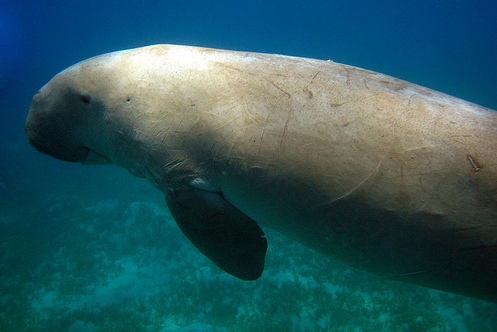
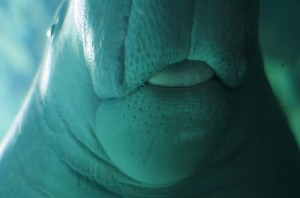
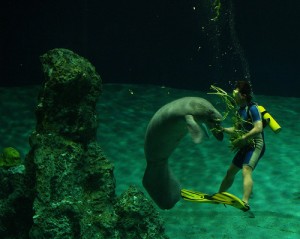

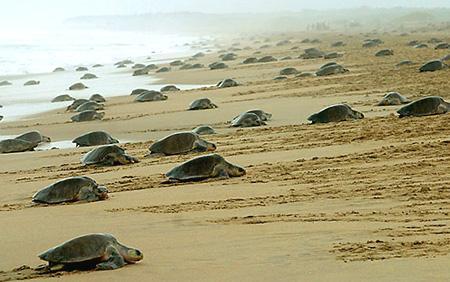


Fresh water cow of ganga river is / was locally called Soos or soons in east of UP . In tributaries (also)
That’s interesting to know. Thanks for sharing. We knew that Ganges river dolphin is called ‘soo-soo’ because of the sound they make, in UP and Bihar. It might be the same term used for both the animals.